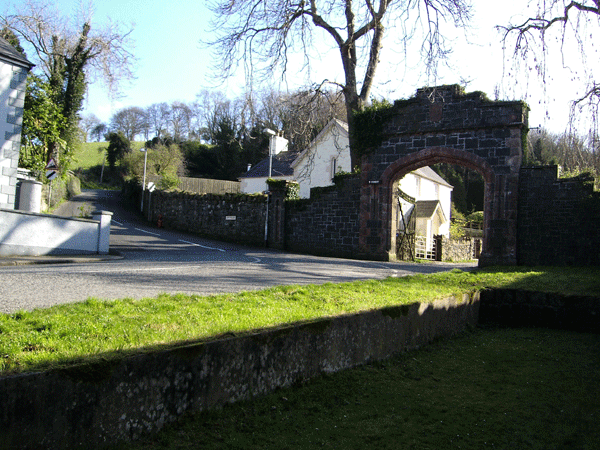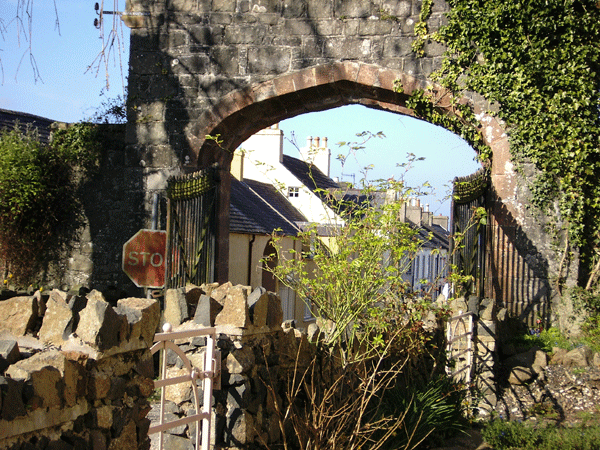| |
Glenarm
Co Antrim. |
||
| Gleann Airm, i.e. Glen of the Army Street Views | Images of Glenarm Castle | Images of St Patrick's Church | Glenarm up to 1837 | Send Ecards of Glenarm The peaceful village of Glenarm situated
on the Antrim Coast Road derives It was not until 1842 that the Antrim Coast road was constructed, this was accomplished by blasting the limestone cliffs which stretched along the coast to the north of the town of Larne and building the road on the debris. The remoteness of the glens was the main reason they were the last place in six county Ulster where gaelic was spoken as the main language. King John is reputed to have landed at Glenarm in the early years of the 12th century. In the early Christian period from
the 5th to the The Vikings appear to have had little impact on this part of the County Antrim coast, the main centre of their activity seems to have been largely confined to Larne. The first record of a castle at Glenarm is dated 1270 when it is recorded as being let to John or Robert Bisset by the Bishop of Down and Connor, it seems that the castle must have existed some time previous to 1270, one source records its builder as the de Galloway's. The village today is the seat of the MacDonnells, a family of Scottish origin, the most famous of whom was Sorley Boy who captured Dunluce Castle on the north coast from the MacQuillins clan after the battle Orra in 1558, thereby gaining control of a large proportion of County Antrim. Read about The Battle of Orra From Sketches of Olden Days in Northern Ireland by Rev. Hugh Forde The MacDonnell's managed in the long
term by various means to
retain control of the property Returning to Glenarm Randall MacDonnell
built a new castle on the northern side of the river where the present
castle now stands, this castle underwent continual improvements and additions
until the death of Sir Randal MacDonnell in 1636, the old castle must
have been restored because it is recorded that it was leased to the Donaldsons;
kinsmen of the MacDonnells, the Donaldsons held tenure of the castle in
1779, however it must have been abandoned sometime At the outbreak of the 1641 rebellion, Glenarm was under the control Alexander MacDonnell, the Earl of Antrim's brother, Alexander raised several regiments which were garrisoned in Glenarm, under the command of one Alester McColl. In 1642 parliament sent a Scottish army under General Robert Munro to deal with Irish rebels, on their arrival in Glenarm they burnt the town including the newly built MacDonnell castle.Both Alexander and the Earl were taken prisoner and held in Carrickfergus castle, With the implementation of The Act of Settlement the MacDonnells once again had their lands restored, with the castle at Glenarm in ruins, the Earl took up residence in Dunluce castle. In the graveyard of St Patrick's church There are many fine views to be seen as one walks around the town Altmore Street leads directly to Glenarm Forest via a beautiful stone arched gateway, from which can be seen Glenarm Castle, on the far bank of the little river which runs through the village to the sea. The imposing entrance to Glenarm Castle, the Barbican Gate, is at the heart of the village. The Castle dates from 1750, with early 19th century alterations. Glenarm claims to be the oldest town in Ulster having been granted a charter in the 12th century. The Barbican Gate to Glenarm Castle was restored by The Irish Landmark Trust, a conservation charity that saves buildings that are at risk of being lost, thus giving this landmark back to the local community through Open Days and self catering holiday lets. The Glenarm river rises on Slemish mountain famed as the site where Saint Patrick was enslaved, discharges into the bay after flowing parallel with the southern boundary wall of the castle |
||
|
|




 despite losing it during
Elizabeth I reign, with James I on the throne Sir Randall MacDonnell managed
to regain control of the Glens and the coastal route, however the area
around Larne went to
despite losing it during
Elizabeth I reign, with James I on the throne Sir Randall MacDonnell managed
to regain control of the Glens and the coastal route, however the area
around Larne went to 
